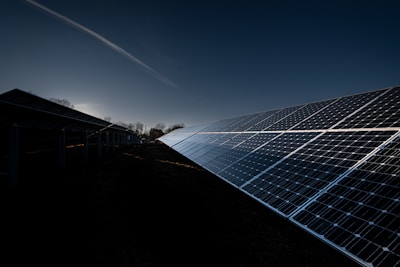As renewable energy continues to gain momentum, one crucial challenge remains: energy storage. You might wonder how we can harness the power of the sun and wind effectively.
That’s where next-gen renewable energy storage comes into play. Exciting advancements are happening right now, and these innovations could change how you think about energy in your daily life. Imagine having access to clean energy that’s reliable, efficient, and ready when you need it.
This article will dive into the latest updates in energy storage technology, revealing how these breakthroughs can benefit you and the environment. Stay with us as we explore what’s on the horizon for renewable energy storage and how it can impact your energy choices in the future.
Advances In Battery Technology
Solid-state batteriesare safer and last longer. They use solid materials instead of liquids. This helps prevent leaks and fires. These batteries are lighter too. They can store more energy.
Lithium-sulfur innovationsoffer better energy storage. They can hold more energy than regular lithium-ion batteries. This means devices can run longer without charging.
Using recyclable and sustainable materialshelps the environment. It reduces waste and pollution. Companies are looking for ways to make batteries greener. This is important for a better future.
Grid-scale Storage Solutions
Flow batteriesstore energy in liquid form. They can last a long time. They are safe and easy to refill. This makes them great for big projects.
Compressed air energy storageuses air to hold energy. It traps air in a strong tank. When power is needed, the air is released. This helps keep the grid stable.
Liquid air systemscool air until it becomes a liquid. This liquid air can be stored. When energy is needed, it warms up and turns back to gas. This process generates power.
Hydrogen Storage Breakthroughs
Green hydrogenis getting better. New methods help make it cleaner. Scientists work on using renewable energyfor hydrogen production. This change helps reduce carbon emissions. It can also lower production costs.
Metal hydride storageis another exciting area. This method uses metals to hold hydrogen. It is safe and effective. Metal hydrides can store more energy than other methods. They are also lightweight.
Ammonia-based solutionsoffer a different approach. Ammonia can be a good energy carrier. It is easy to transport and store. Using ammonia can help with energy needs. This method may also help reduce pollution.
Thermal Energy Storage
Thermal energy storagehelps store heat for later use. It can save energy and reduce costs.
Molten salt systemsuse salt to store heat. They work well for large power plants. These systems can keep heat for many hours.
Phase change materialsare special substances. They change from solid to liquid and back. This helps store and release heat easily.
Geothermal heat storageuses heat from the Earth. It can provide energy for homes and buildings. This method is clean and reliable.
Ai And Iot In Energy Storage
AIand IoThelp improve energy storage.
Predictive maintenanceuses data to find problems early. This saves time and money. Machines run better and last longer.
Energy demand forecastingpredicts how much energy will be needed. This helps plan for busy times. It ensures enough energy is stored.
Smart storage optimizationadjusts energy use. It balances supply and demand. This makes the system more efficient.
Decentralized Energy Storage
Decentralized energy storagehelps homes save energy. Home battery systemsstore power from solar panels. This stored energy can be used at night or during outages.
Community microgridsconnect local homes and businesses. They share energy with each other. This keeps the energy supply strong and reliable.
Peer-to-peer energy sharingallows people to sell extra energy. Neighbors can buy and sell energy directly. This creates a more connected energy community.
Emerging Materials For Energy Storage
Graphene-based solutionsoffer high conductivity and strength. They can store energy well. This makes them useful for batteries and supercapacitors.
Nanostructured materialshave tiny structures that improve storage. They help increase energy capacity. These materials can also charge quickly.
Organic moleculesare a new option for energy storage. They are often cheaper than other materials. They can be made from natural sources. This makes them eco-friendly and sustainable.

Regulatory And Market Trends
Incentives help people use energy storage more. Governments offer money to support these projects. Many businesses see this as a chance to grow.
Global investmentin renewable energy is rising fast. More money flows into clean energy projects every year. Countries are focusing on solar and wind energy.
Policy shiftsare changing the energy landscape. Rules are better for renewable energy. This means more support for storage solutions.
| Aspect | Details |
|---|---|
| Incentives | Financial support for energy storage |
| Investment Trends | Increasing funding for renewable energy |
| Policy Changes | New rules favor clean energy |
Frequently Asked Questions
What Is Next-gen Renewable Energy Storage?
Next-gen renewable energy storage refers to advanced technologies designed to store energy from renewable sources. These systems enhance efficiency and reliability, enabling better integration with the grid. Innovations include battery storage, pumped hydro, and thermal storage, all aimed at providing sustainable energy solutions for the future.
How Does Renewable Energy Storage Work?
Renewable energy storage captures energy generated from renewable sources for later use. It typically involves converting energy into a storable form, like electricity into chemical energy in batteries. When demand increases or production decreases, this stored energy is released, ensuring a steady supply of power.
Why Is Energy Storage Important For Renewables?
Energy storage is crucial for maximizing the benefits of renewable energy. It helps balance supply and demand, compensating for the intermittent nature of sources like solar and wind. By storing excess energy, it enhances grid stability and increases the overall efficiency of renewable energy systems.
What Are The Latest Trends In Energy Storage Technology?
Recent trends in energy storage technology include advancements in battery chemistry, such as solid-state and lithium-sulfur batteries. Other innovations involve grid-scale storage solutions and AI-driven energy management systems. These developments aim to improve efficiency, reduce costs, and support the transition to a more sustainable energy future.
Conclusion
Next-gen renewable energy storage is changing how we use energy. New technologies make storing energy easier and more efficient. This helps us rely on clean energy sources. As these advancements grow, we can expect more reliable energy solutions. Communities and businesses will benefit from better storage options.
Staying informed about these updates is important for a sustainable future. Together, we can support a cleaner environment and a more stable energy supply. Embracing these changes leads to a brighter, greener tomorrow.
Read More:
- Global Supply‑Chain Disruption Alerts: Navigating the Chaos
- Smart Grid Pilot Program Launches: Revolutionizing Energy Use
- Us Midterm Election Impact Analysis: Key Takeaways & Trends
- New Data‑Privacy Law Enforcement Cases: Unveiling Insights
- Mental‑Health Teletherapy Adoption Rates: A Rising Trend
- Ethereum Shanghai Upgrade Analysis: Unveiling Key Insights
- German Election Polling Analysis: Insights and Key Trends
- Bitcoin ETF Approval Timeline: Navigating the Future

